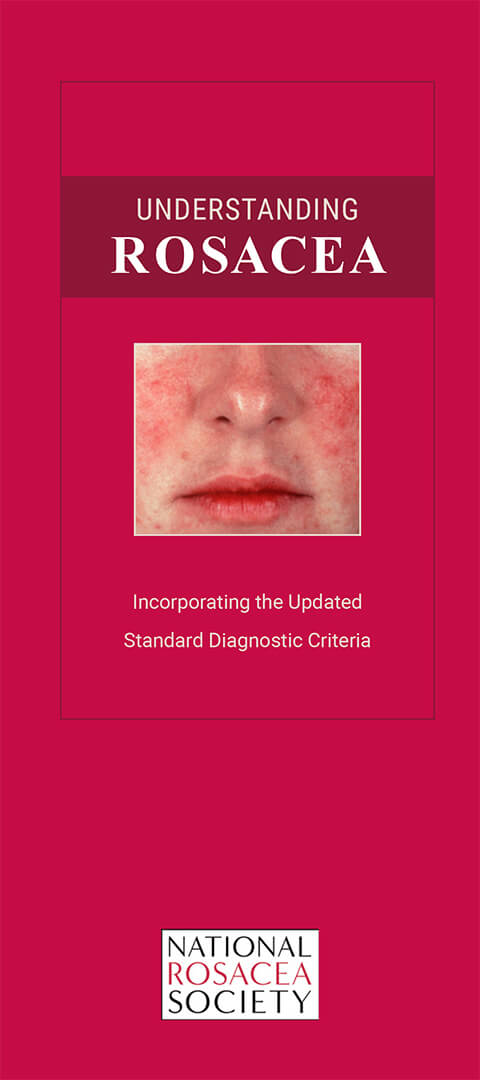 The National Rosacea Society today announced it has introduced an updated version of “Understanding Rosacea,” its most popular educational booklet that provides an introduction to this chronic facial skin disorder estimated to affect more than 16 million Americans. The new edition incorporates the updated standard classification and pathophysiology of rosacea, developed by a consensus committee and review panel of 28 rosacea experts worldwide and published in the Journal of the American Academy of Dermatology.
The National Rosacea Society today announced it has introduced an updated version of “Understanding Rosacea,” its most popular educational booklet that provides an introduction to this chronic facial skin disorder estimated to affect more than 16 million Americans. The new edition incorporates the updated standard classification and pathophysiology of rosacea, developed by a consensus committee and review panel of 28 rosacea experts worldwide and published in the Journal of the American Academy of Dermatology.
“‘Understanding Rosacea’ is an excellent resource for newly diagnosed rosacea patients, who often have questions about the disease and the lifestyle changes that may be necessary to achieve and maintain remission,” said Dr. John Wolf, chairman of dermatology at Baylor College of Medicine. “While they may discover outdated and even contradictory information online, this booklet provides an accurate overview of our current understanding of rosacea.”
The booklet includes an overview of the diagnostic, major and secondary features of rosacea, along with photos to help patients identify the signs and symptoms of the disorder. It also provides information about the potential causes of rosacea, medical treatments and skin care, tips to avoid environmental and lifestyle triggers and how to effectively manage living with the disease.
Rosacea is a chronic disorder of the facial skin with various potential signs and symptoms, often characterized by flare-ups and remissions. According to the recently updated standard classification of rosacea by phenotypes (signs and symptoms), the presence of persistent facial erythema (redness) or, less commonly, phymatous changes where the facial skin thickens is considered diagnostic of the disorder. Additional major signs, which often appear with the diagnostic features, include papules (bumps) and pustules (pimples), flushing, telangiectasia (visible blood vessels) and certain ocular manifestations. The presence of two or more major features independent of the diagnostic signs may also be considered diagnostic of rosacea, and secondary signs and symptoms include burning or stinging, swelling and dry appearance.
Rosacea sufferers may download the new “Understanding Rosacea” booklet free of charge from the NRS website, where health professionals may also order bulk quantities for use as handouts to their patients. The updated booklet can also be obtained by writing the National Rosacea Society, 111 Lions Dr., Suite 216, Barrington, Illinois 60010; via email at info@rosacea.org; or by calling its toll-free number at 1-888-NO-BLUSH. The new booklet was made possible by a grant from LEO Pharma.
The NRS offers additional educational materials to patients and physicians, including “Coping with Rosacea,” a patient guide to eliminating those lifestyle and environmental factors that aggravate rosacea in individual cases; “Management Options for Rosacea,” a free patient handout that provides an overview of available treatment options addressing each of rosacea’s potential signs and symptoms, also known as phenotypes; “Recognizing Redness,” a measurement gauge for the most common sign of rosacea; Rosacea Review, a newsletter for rosacea patients; and the “Rosacea Diary,” a booklet containing diary pages to help patients identify and avoid their personal rosacea triggers.